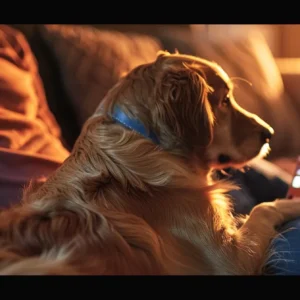Simple Pet Camera Installation Guide
When selecting a camera to monitor one’s pet, clarity on the cookies policy ensures your privacy remains intact. An ideal pet camera blends seamlessly with both Android and iOS platforms, granting access to real-time footage over the internet. Prior to reveling in the peace of mind this technology provides, one must navigate through essential steps like securing connections with a robust firewall. This article offers a comprehensive guide to effortlessly installing your pet camera, ensuring you never miss a moment of your pet’s day. Keep reading to transform your pet monitoring experience with expert advice on setup and maintenance.
Choosing the Right Pet Camera for Your Home
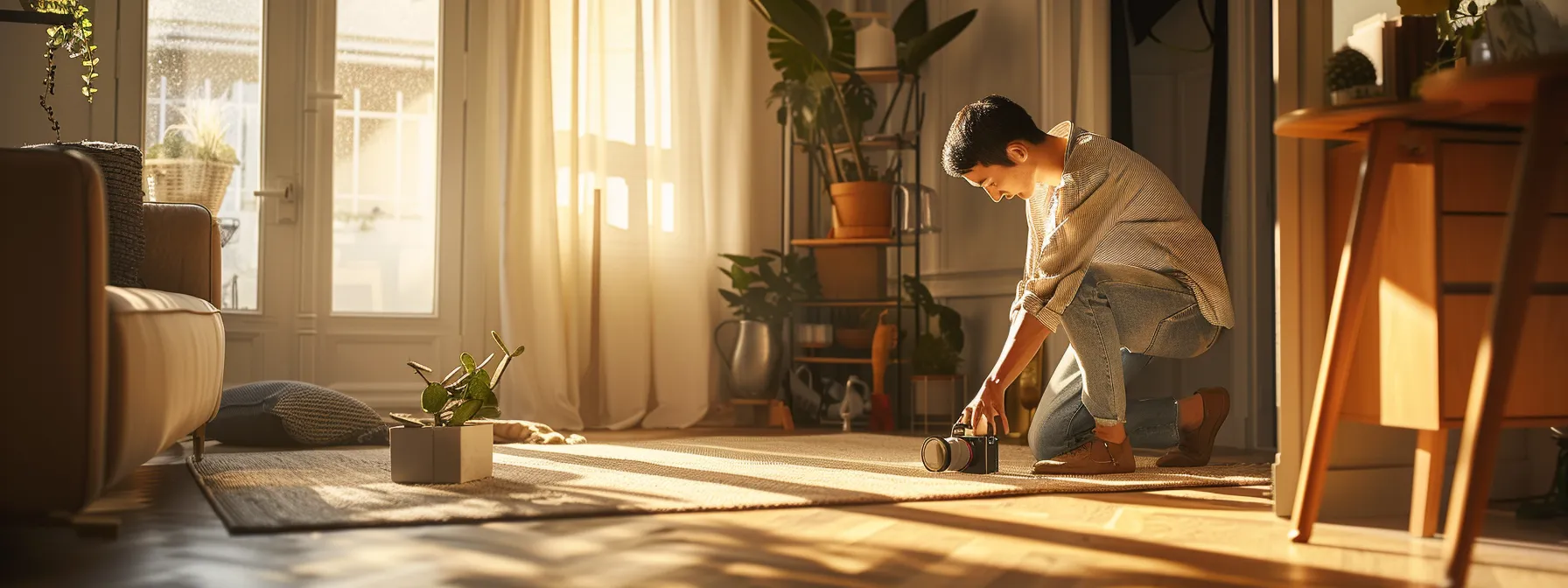
Choosing the right pet camera involves more than just picking a model with the highest reviews. Initially, one must closely examine the unique habits and requirements of their pet; restless puppies might need cameras with interactive capabilities, whereas a sleepy cat might necessitate less engagement and more monitoring. Next, comparing key features of various camera models becomes imperative – resolution, storage options, and the ability to integrate smoothly with an iOS system or different identity provider can greatly impact user satisfaction cookies policy. Moreover, the prospective buyer should meticulously contemplate optimal camera placement to ensure their companion’s entire range of activity is captured without intruding on the privacy of the home. Additionally, it is particularly important to note the login process for each device; a complex system can pose unnecessary hassle, whereas too simple a method might raise concerns about security and the safeguard that a strong password provides. By addressing these topics, owners can ensure not only the security and happiness of their pets but also their peace of mind.
Assess Your Pet’s Needs
Before making a selection, owners should evaluate whether their pet‘s behavior necessitates a camera that can be accessed via a mobile device for real-time interaction or simply for occasional check-ins. For pets prone to unexpected motion or those who exhibit separation anxiety, opting for a camera that offers immediate alerts or the functionality to calm them through two-way audio could be advantageous.
For tech-savvy pet owners, considerations might include whether the camera can be connected to a raspberry pi to create a custom server or if an sd card slot is available for local storage to ensure footage is securely retained. This enables not only greater control over how pet videos are stored and accessed but also the flexibility to adjust storage capacities as needed.
Compare Key Features of Different Cameras
When evaluating pet cameras, one must consider compatibility with the home network to ensure seamless streaming and connectivity. A camera that easily syncs with the router and maintains a strong connection will offer reliability and constant access to live footage, a crucial element for monitoring a pet’s well-being.
Additionally, the availability of corresponding mobile applications on platforms such as Google Play for Android users and the App Store for iPhone users can significantly influence user experience. Cameras that enable effortless app integration allow for quick and efficient control, providing pet owners with on-the-go monitoring capabilities.
Consider Camera Placement and Pet’s Range
Securing the right location for a pet camera is tantamount to its effectiveness in monitoring a pet‘s activities. Careful consideration must be given to the camera‘s field of view, ensuring that the pet’s full range of motion is captured, while also paying close attention to maintaining a secure local network ip address, which prevents unauthorized access to the live feed.
Proper authentication mechanisms, such as those using a secure http connection coupled with a unique email address for login alerts, are indispensable for homeowners who wish to couple convenience with safety. Moreover, pet owners should consider a camera with usb compatibility, which aids in the ease of installation and facilitates seamless software updates and maintenance.
With the ideal pet camera selected, the journey to connect with your furry companion from afar begins. Let’s take the next definitive step and smoothly navigate the app download process.
Step-by-Step Guide to Downloading the Pet Camera App
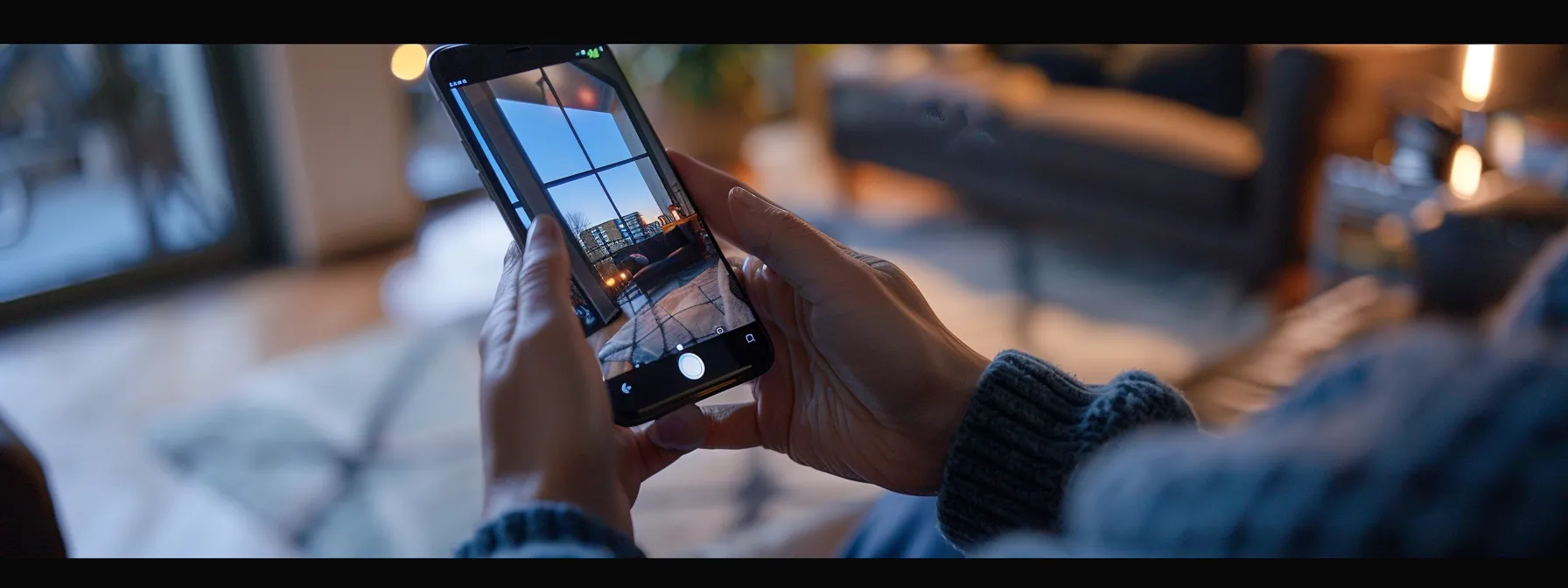
Initiating the simple pet camera installation begins with locating the application on the smartphone’s designated App Store. Users should search for the specific app connected to their pet camera model, pressing the correct button to commence the download. Installation follows, during which the app may prompt the user for permissions necessary to operate effectively. Once installed, users must either create a new account or log in using existing credentials, securing access to the camera‘s controls and live feed. Observant attention to this process is crucial, as it helps streamline any potential troubleshooting with the device or web server in later stages.
Find the App on Your Smartphone’s App Store
To begin the installation, pet owners should utilize their mobile phone to navigate to the App Store or Google Play, depending on their device. By entering the name of their chosen pet camera, which may feature functions like night vision, they can readily find the appropriate application to facilitate remote monitoring.
Correctly identifying the application is essential, ensuring that the camera‘s features, such as sudo command execution for camera configuration or optimal power supply management, can be fully utilized. Obtaining the correct app enables the user to harness the full potential of their pet monitoring system on their mobile phone.
Download and Install the App
Upon successful location of the pet camera application within the smartphone‘s App Store, one promptly commences the download. This critical step, akin to a flash of insight, paves the way to a treasure of features such as infrared night vision, which guarantees clarity even in the lowest light conditions.
Following the download, installation begins, and as the app integrates with the device, the user often anticipates constructive feedback. A glance through the app’s menu should reveal customizable options, assuring the user that they’re on the right path to establishing a seamless connection with their pet camera system.
Create an Account or Log In
Once the application is firmly entrenched within the device, the prospective user is prompted to engage further by either forging a new account or logging in. This pivotal juncture marks the commencement of interaction with the webcam‘s interface; selecting the correct icon initiates a process that links the device to the company’s servers and unlocks the full suite of monitoring tools.
Should complications arise during these initial steps, one is advised to seek clarity by employing the refresh function or reaching out to contact support. This action often rectifies common login issues, restoring the connection between the pet owner’s mobile device and the webcam‘s distributed network.
Now that the pet camera app is installed, the next step is to ensure its proper placement. Mounting your camera securely is vital for optimal viewing and peace of mind.
How to Mount Your Pet Camera Securely
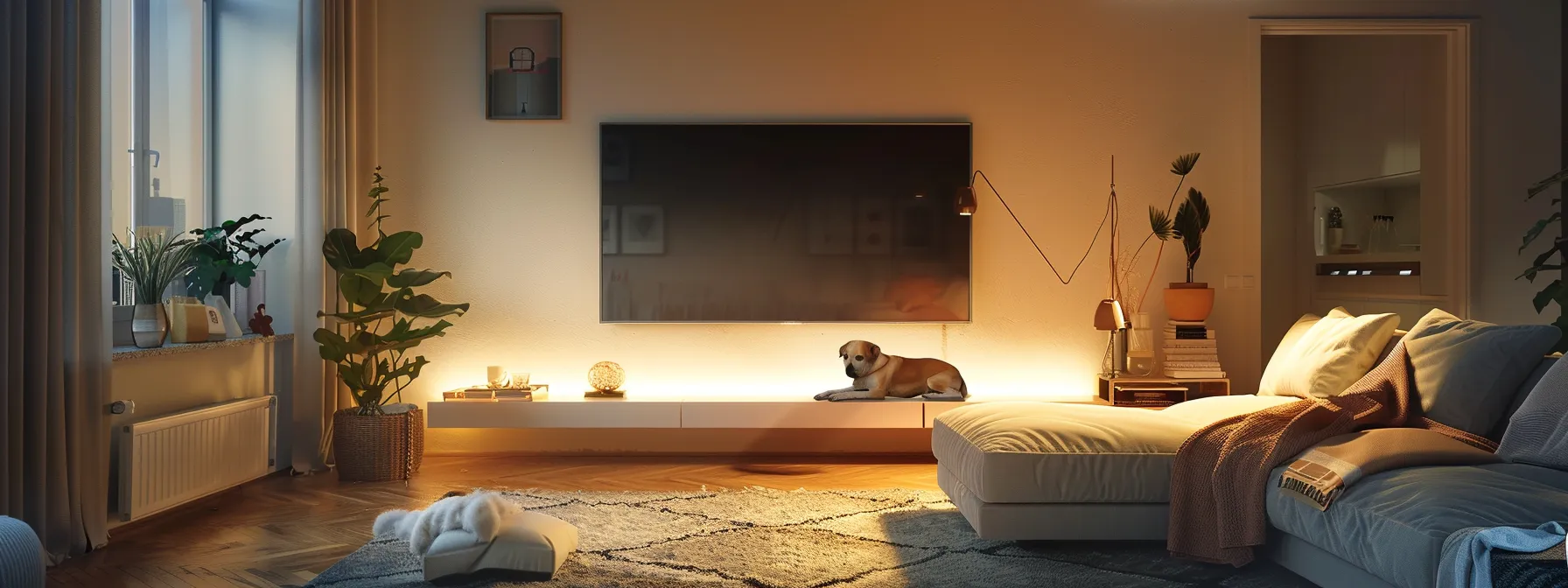
Securing a pet camera provides not only a window into the behavior of a beloved animal during absences but also a means to manage peace of mind for the owner. The ideal locale for installation must be chosen with care, accounting for both the comprehensive reach of the camera‘s lens and its integration into the home’s network. Pet owners are encouraged to consult the support team and peruse the mounting instructions provided on the manufacturer’s website to ensure an effective setup. Cards featuring detailed diagrams may accompany the camera, guiding users through each step. Critical to this process is adjusting the angle to envelop areas favored by the pet, guaranteeing no precious moment is missed. Proper mounting fortifies the connection between pet and owner, fashioning a link that extends beyond physical presence.
Select the Perfect Spot for Camera Placement
The quest to pinpoint the perfect spot for a pet camera requires an analysis of the area that will secure the ideal field of view through the camera’s lens. It’s essential to select a placement that covers the pet‘s favorite spots and play areas, ensuring the microphone has the capacity to pick up any sounds or distress calls from the pet.
For a streamlined installation, one should consider whether a direct wire connection or a sound wireless security protocol will serve the setup best. The chosen area should have a stable surface to avoid vibrations that could disrupt the lens focus and should be strategically positioned to avoid wires being a trip hazard or within reach of a curious pet.
| Installation Step | Details |
|---|---|
| Field of View | Ensure camera placement encompasses the pet’s most frequented areas within the lens visibility. |
| Sound Capture | Position the camera where its microphone can clearly pick up audio from the pet’s location. |
| GitHub Reference | Consult GitHub for any community-shared tips or scripts that could enhance installation. |
| Wiring Considerations | Decide on using a wire or ensure the wireless security measures are failproof. |
| Stability and Safety | Mount the camera on a stable surface and tuck away wires to prevent tripping or pet access. |
Follow the Mounting Instructions Provided
Secure attachment of your pet camera begins with reading the instructions meticulously to determine the specific tools needed. For instance, a doorbell type camera may necessitate a particular kind of screw and mounting bracket to firmly affix to the wall. Abiding by these details ensures a steadfast installation, minimizing the risk of camera displacement or damage.
Included often within the camera’s packaging are a unique QR code and installation guidelines to streamline the setup process. Scanning this code with a smartphone commonly leads to an instructional video or step-by-step guide, illustrating the proper method to securely mount a high-definition 1080p pet camera to the desired surface.
| Installation Step | Action Required |
|---|---|
| Tool Assessment | Determine and gather appropriate screws and tools for mounting the camera. |
| QR Code Scan | Use a smartphone to scan the QR code and access detailed installation instructions. |
Ensure the Camera Angle Covers Your Pet’s Favorite Spots
A strategic mounting location for the pet camera is pivotal, as it should wirelessly interface with a digital video recorder to seamlessly blend into the home security setup. Careful angling of the camera, employing the right tool for adjustments, captures pristine images that track the pet‘s movements across its cherished nooks and corners.
Furthermore, the ideal angle for the pet camera is one that delivers a comprehensive view without obstruction, allowing pet owners to observe their furry companions with clarity. Precision in positioning not only compleforms with home security protocols but also enhances the overall utility of the digital video recorder by delivering high-quality footage of the areas most loved by the pet.
Once your pet camera is mounted securely, the next key step beckons: establishing a reliable Wi-Fi connection. Ensure uninterrupted virtual play dates and peace of mind by connecting your device to your home network swiftly.
Connect Your Pet Camera to Wi-Fi
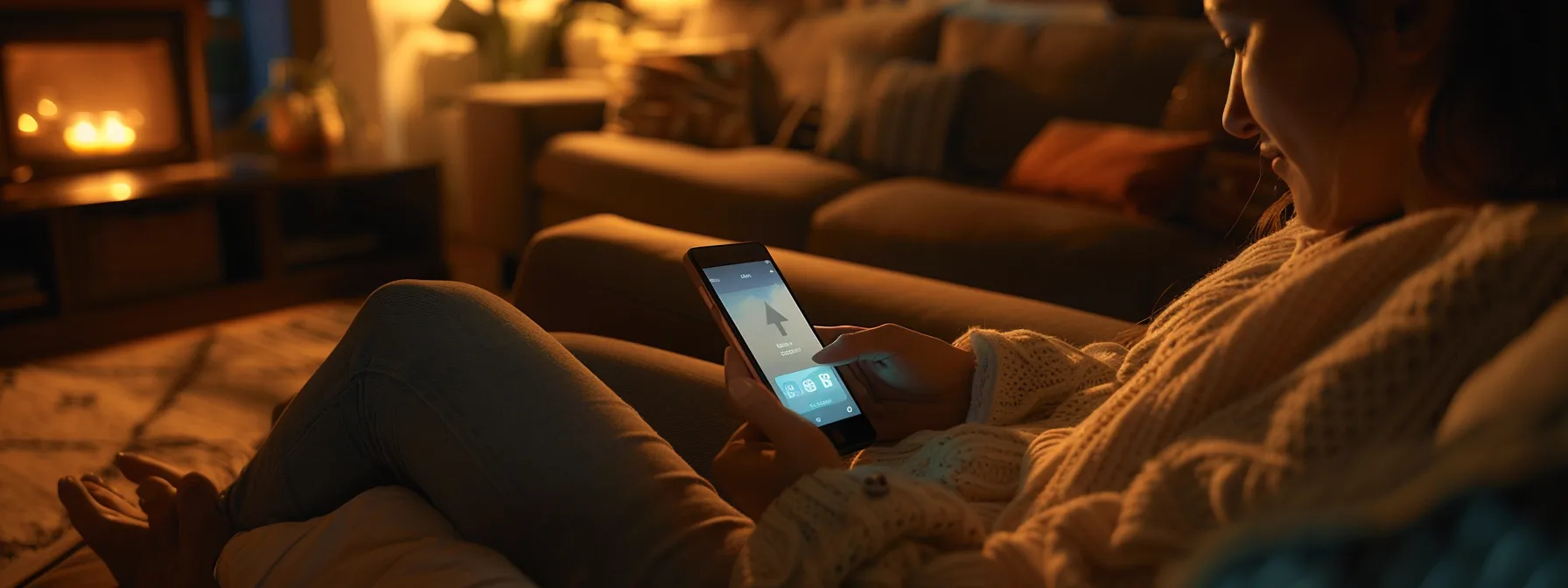
To fully integrate a pet camera into a household’s ecosystem, establishing a robust Wi-Fi connection is as fundamental as charging an electric vehicle before a journey. Once the camera is securely mounted and powered – potentially through an eco-friendly solar panel – the owner should navigate to the home screen of the downloaded app, which serves as a centralized hub for camera configuration. Initiating this connection requires precise entry of Wi-Fi network details; the information provided must be accurate to ensure seamless connectivity. If the process hits a snag, akin to a drill hitting an unexpected knot in wood, swift troubleshooting will help to realign the setup procedure and restore the functional link between the camera and the home’s wireless network.
Locate Your Wi-Fi Settings in the App
Once the smart security camera app is successfully downloaded to a device, pet owners are advised to scour the app’s interface for network settings. This will likely involve navigating a simple menu where the user can pinpoint and select Wi-Fi configuration options to connect their pet camera, which could feature advanced functions like a floodlight for enhanced visibility.
Interaction with the app reveals the necessary prompts to link the camera to the home Wi-Fi network, critical for features such as a video doorbell to function effectively. The user must supervise the steps to confirm that their smart security camera maintains the angle essential for capturing activities in real-time, without interruption due to network issues.
Enter Your Wi-Fi Network Details
Initiating the crucial step of entering Wi-Fi network details within the app, pet owners must adhere closely to the guidelines delineated by the camera‘s terms of service. This meticulous data entry ensures the camera functions optimally within the home’s security system, under the warranty provided.
| Wi-Fi Setup Step | Action to Take |
|---|---|
| Accuracy of Information | Confirm that the Wi-Fi network name and password are entered correctly. |
| Terms of Service Compliance | Review the warranty and terms to verify proper use within the security system framework. |
Once the necessary internet credentials are furnished, the system integrates the pet camera into the household’s wired or wireless network. It’s a straightforward process where the app becomes the bridge between the device and the user‘s network, fortifying the security system’s connectivity.
Troubleshoot Any Connection Issues
If a pet camera fails to sync with the home Wi-Fi network, an initial step is to verify the strength of the Wi-Fi signal in the camera‘s location. Correcting issues such as weak signal strength or interference from other devices often restores connectivity, enabling the camera‘s features to perform as expected without disruption.
Should connection problems persist, restarting both the pet camera and the router can re-establish the network link. Resetting these devices clears potential glitches and allows for a fresh connection attempt, which can resolve the majority of connectivity concerns, ensuring the pet camera’s integration into the home network is successful.
Connecting your pet camera to Wi-Fi marks the first step towards peace of mind. Next, ensure you get the best view – position your camera strategically to keep an eye on your furry companions no matter where you are.
Positioning Your Pet Camera for Optimal View
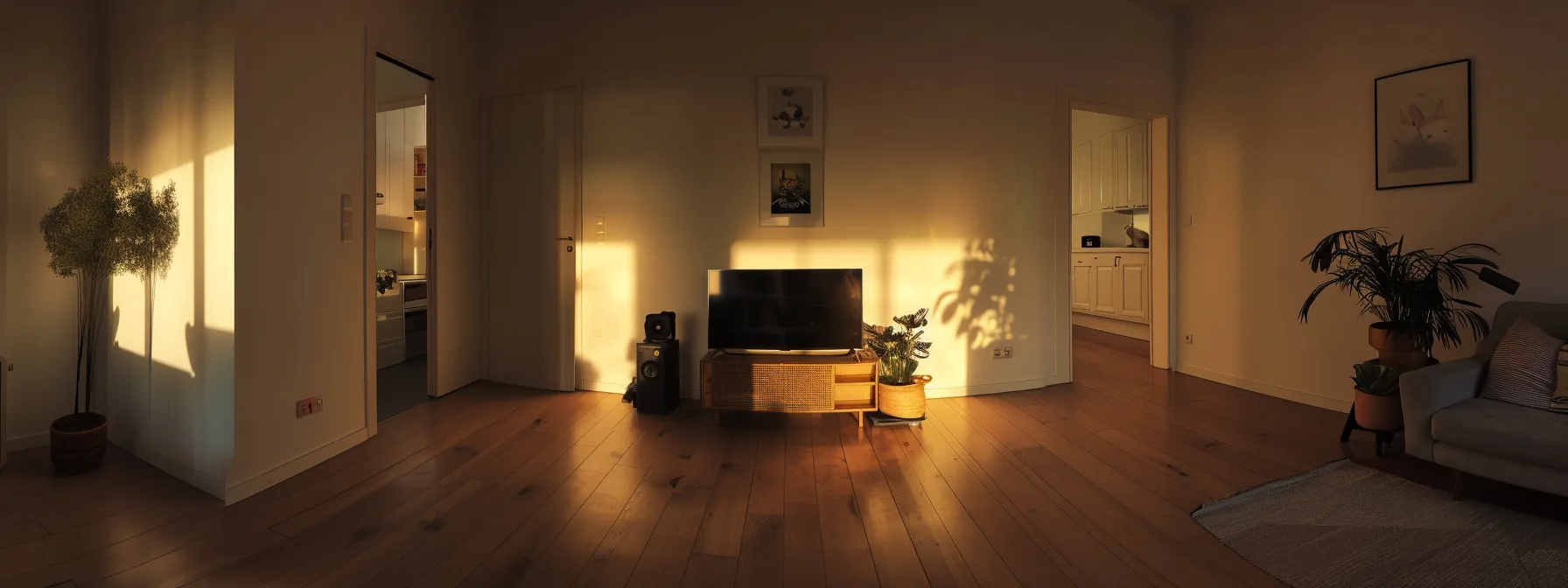
Effective placement of a pet camera is pivotal to its performance in providing a comprehensive view of a pet’s activities and ensuring their safety. Pet owners should invest time in testing various locations throughout the living space to determine where the camera yields the best visual results. Once a plausible spot is identified, adjusting the camera to capture a wide angle of the room is crucial, as it extends the observation area. Care must be taken to ensure the chosen position is free of any possible obstructions that might block the camera‘s line of sight. Keeping these steps in mind will serve as a foundation for achieving clear, unobstructed footage of pets in their home environment.
Test Different Locations for Best Results
Before finalizing the installation, it’s advisable for pet owners to experiment with different locations within their residence. A high vantage point, for instance, might offer a comprehensive view covering the entire room, ensuring no playful scurry or serene nap goes unnoticed.
Moving the pet camera among multiple areas helps in evaluating the lighting conditions and potential interference from household objects. Such proactive measures are beneficial for finding the sweet spot that affords a clear, unencumbered perspective on the pet‘s daily happenings.
Adjust the Camera Angle for Wide Room Coverage
Strategic adjustment of the camera angle maximizes room coverage, allowing pet owners to observe a larger portion of their pet‘s environment. This not only captures more of the pet‘s movements but also reduces blind spots, ensuring a pet‘s safety is continuously monitored.
By fine-tuning the camera‘s orientation, owners ensure that key areas such as pet beds, entry points, and play zones fall within the field of vision. Carefully calibrating the angle ensures that the camera delivers comprehensive surveillance without the need for additional cameras:
- Identify primary zones within the room where pets frequent and adjust the camera to encompass these areas.
- Experiment with camera height and angle to achieve maximum visibility and minimize obstructions.
- Once optimal positioning is found, secure the camera to prevent gradual shifts that may reduce field of coverage over time.
Make Sure No Obstructions Block the View
When arranging a pet camera, individuals must inspect the vicinity for any objects that could obscure the camera’s perspective. It is crucial to remove items like vases, picture frames, or plants that may impede the lens, ensuring the pet remains visible throughout the day.
Attention is required to maintain a clear line of sight between the camera and areas where the pet spends a majority of its time. Owners ought to verify that furniture or home decor does not encroach upon the camera‘s field of view, allowing for an unobstructed and continuous watch over their animals.
Transitioning smoothly, the next step revolutionizes the monitoring experience. Let’s activate motion detection and configure alerts, ensuring you never miss a moment of your pet‘s day.
Setting Up Motion Detection and Alerts

Integral to the functionality of pet cameras is the motion detection feature, which serves to alert owners to their pet‘s activities in real time. Owners can adapt this crucial aspect of the camera‘s system through the dedicated app, where they will find options to modify motion sensitivity and manage the frequency and type of alerts received. Proper configuration ensures that notifications are both relevant and timely, minimizing unnecessary alerts while remaining vigilant to significant movements. Testing the system’s responsiveness with one’s pet confirms the efficacy of the settings, providing assurance that the camera will alert the owner to any crucial activities while they’re away from home.
Access Motion Detection Settings in the App
Within the app, the path to calibrating motion detection settings is typically straightforward, guiding pet owners toward customizing how their camera monitors pet movement. By tweaking the sensitivity levels, owners can dial in on the amount of movement required to trigger an alert, enhancing the accuracy of notifications sent to their mobile devices.
After accessing the motion detection menu, the user can specify zones within the camera‘s view for focused monitoring: selecting areas where pets are most active ensures relevant alerts are prioritized. This zone creation feature allows pet owners to concentrate surveillance in the most crucial areas:
- Navigate to the motion detection settings within the app.
- Adjust the sensitivity slider to match the desired responsiveness to your pet’s activity level.
- Designate motion zones by highlighting areas in the camera‘s field of view.
The application may also offer a scheduling feature, where owners can define specific times for motion detection to be active, conserving energy during hours when monitoring is unnecessary. Integrating a well-tuned alert system curtails the flood of insignificant notifications, maintaining the focus on the pet‘s well-being and owner’s convenience.
Customize Motion Sensitivity and Alert Preferences
Adjusting the motion sensitivity of a pet camera empowers owners to tailor the device’s responsiveness to their specific needs. High sensitivity levels are ideal for capturing even the slightest movement, ensuring owners of energetic pets won’t miss a beat, while lower settings are suitable for less active pets or to avoid unnecessary triggers from routine household movements.
Alongside sensitivity adjustments, setting up alert preferences is crucial for maintaining the delicate balance between staying informed and avoiding overwhelming notification volumes. Owners can select the types of notifications they prefer, ranging from push notifications on their smartphones to emails, each method providing real-time updates on their pet‘s activities for seamless monitoring.
Test the Alert System With Your Pet
Pet owners must engage in a thorough testing process to validate the responsiveness of the motion alert system configured within their pet camera setup. Engaging their pet in normal activities allows for a practical assessment of the alert triggers and the rapidity with which the system conveys notifications to the owner’s device.
Once engaged in this review, pet owners can judge the effectiveness of the motion detection feature under typical household dynamics. Such testing helps in fine-tuning the system, ultimately ensuring that the alerts they receive are both timely and indicative of their pet‘s genuine needs and behaviors.
Having mastered the basics of motion detection, let’s turn our attention to more advanced functionalities. Fine-tuning your pet camera‘s features promises a richer, more interactive experience.
Enhancing Your Pet Camera’s Features
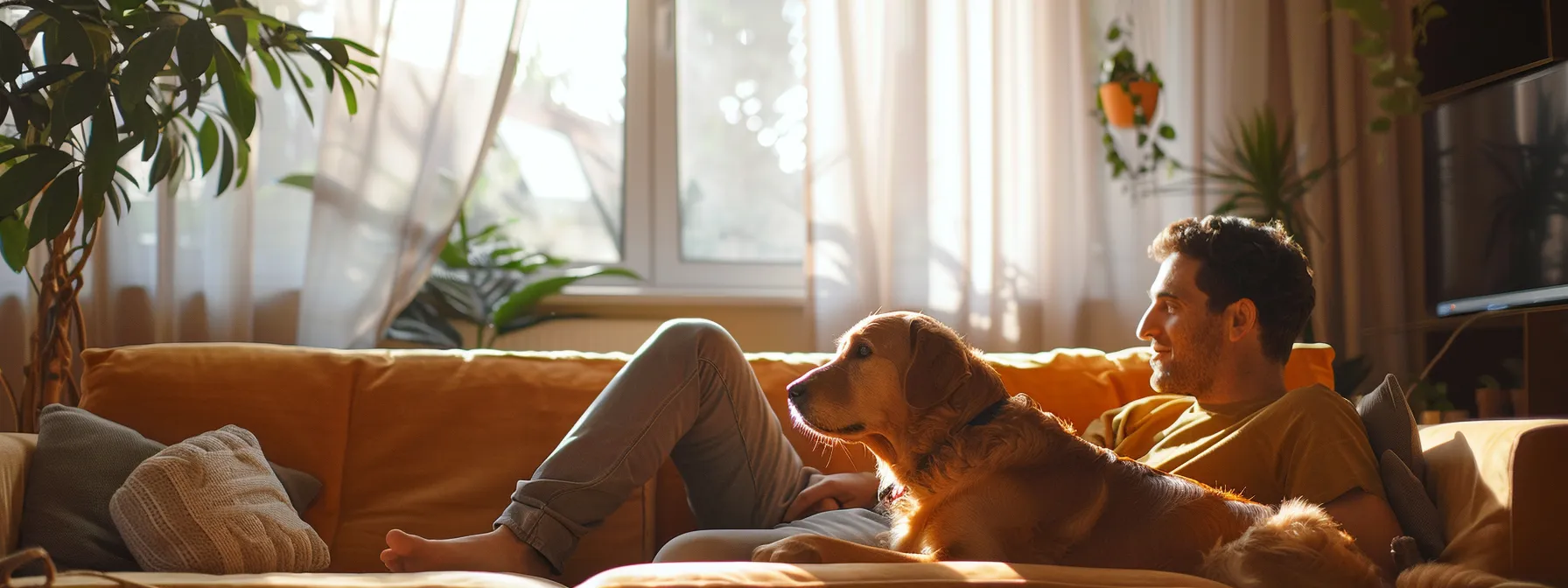
While a basic setup provides owners with the ability to observe their pets, enhancing a pet camera system with additional functionalities can transform the monitoring experience. Delving into the features, night vision extends the camera‘s utility into the darker hours, ensuring a pet‘s nocturnal habits do not go unnoticed. For a more interactive experience, deploying two-way audio permits conversations with a pet, soothing them with a familiar voice despite physical absences. Moreover, enabling video recording and live streaming ensures precious moments are captured and savored or allows real-time sharing with family and friends. These advanced features enrich the monitoring system, offering pet owners a multifaceted approach to staying connected with their furry companions.
Explore Additional Features Like Night Vision
Integrating night vision is an often underestimated yet vital feature for pet cameras. This capability provides clarity in low-light conditions, ensuring pet owners can monitor their companions around the clock without compromising on image quality.
Night vision technology employs infrared LEDs that illuminate dark spaces, granting owners the ability to observe nocturnal behaviors or check on their pets during the night without disrupting their rest with bright lights or flash.
Set Up Two-Way Audio to Communicate With Your Pet
Introducing two-way audio into a pet camera setup greatly enhances the interactive aspect of pet monitoring systems. This function allows owners to not only hear their pets but also to communicate with them, offering reassurance with a familiar voice during times when pets are alone.
Successfully deploying this feature requires users to activate the microphone and speaker options through the device’s app interface. Once configured, the two-way audio feature serves as a bridge, facilitating comforting exchanges that help to alleviate a pet‘s feelings of loneliness or anxiety.
Activate Video Recording or Live Streaming
Activating video recording or live streaming on a pet camera enables owners to capture their pet‘s moments whether they are home or away. This feature is pivotal for pet owners who want to collect memories or monitor pet sitters during their absence.
Live streaming offers real-time engagement with pets, allowing owners to watch over their companions at any moment, providing an added sense of security and connectedness. Video recording, on the other hand, aids in reviewing the pet‘s behavior over time, which can be invaluable for training or detecting any health-related issues.
Upgrading your pet camera unlocks a new level of interaction and peace of mind. Yet, even with advanced features, technical challenges can arise that require attention.
Troubleshooting Common Pet Camera Issues

Despite meticulous planning and careful setup, pet camera systems may occasionally falter, necessitating an array of troubleshooting techniques. Resolving Wi-Fi connectivity problems is often the first step, involving a careful review of network settings and signal strength to ensure uninterrupted video feed. Addressing motion detection issues typically requires recalibrating sensitivity settings or redefining alert parameters within the device software. For challenges that withstand basic troubleshooting, escalating concerns to customer support offers a direct avenue to specialized assistance, helping pet owners restore their pet camera‘s functionality and regain their sense of security.
Resolve Wi-Fi Connectivity Problems
If a pet camera loses connection to Wi-Fi, initiating a router reset may often remedy the situation. This simple yet effective strategy involuntarily interrupts power, prompting the device to re-establish a fresh, robust link with the network upon reboot.
Should connectivity issues persist post-restart, checking for firmware updates is advisable. Downloading the latest software version for the pet camera guarantees the most recent enhancements and bug fixes, supporting a more stable connection between the device and the home Wi-Fi network.
Fix Issues With Motion Detection
Addressing motion detection flaws begins with inspecting the pet camera‘s sensitivity settings. A pet owner must ensure the detection threshold aligns with the size and speed of their pet‘s movements to avoid missed alerts or false alarms.
- Examine the sensitivity settings and adjust accordingly to suit the pet‘s activity level.
- Check for any physical obstructions that may impede the camera‘s motion sensors.
- Confirm the camera‘s firmware is up-to-date to prevent software-related detection issues.
For issues that counter a straightforward fix, performing a system reset on the pet camera can often recalibrate the device’s sensors. This reset not only refreshes the system’s settings but may also resolve underlying glitches affecting motion detection capabilities.
Contact Customer Support for Unresolved Issues
In situations where common troubleshooting steps prove inadequate, reaching out to customer support becomes a vital recourse for pet camera users facing persistent issues. Customer support representatives possess specialized knowledge of the product, enabling them to provide targeted assistance and walk-through solutions that may not be readily apparent to the user.
Engaging with the manufacturer’s customer support often yields expedited resolution to technical concerns, ensuring continuity in the pet monitoring experience. A direct line of communication with trained professionals offers the necessary guidance to address complex problems, restoring the pet camera‘s functionality with minimal downtime.
Ensuring your pet‘s safety stretches beyond solving technological hitches. Next up, learn how to fortify your pet camera against unwelcome intruders.
Safeguarding Your Pet Camera Against Hackers
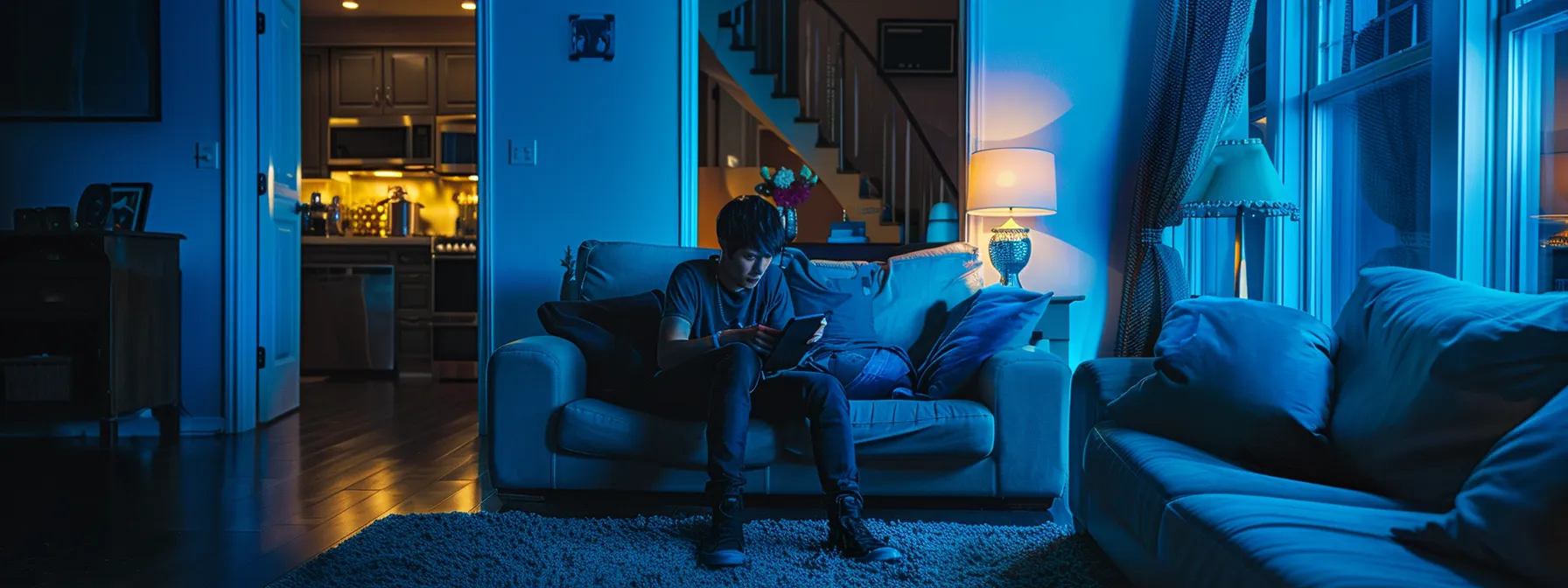
Securing a pet camera extends beyond the physical installation; protecting the device from unauthorized access is paramount to both the safety of the pet and the privacy of the home. A pivotal first step involves creating a robust, unique password for the associated application, leaving archaic and predictable passwords behind. Vigilance is equally critical in maintaining the camera‘s firmware—regular updates seal vulnerabilities that could be exploited by hackers. Wherever possible, the activation of two-factor authentication bestows an additional layer of security, requiring not just a password but a second, time-sensitive code to verify the user‘s identity. These measures collectively form a robust defense against digital intrusions, ensuring pet owners can rely on their cameras for secure, stress-free monitoring.
Create a Strong, Unique Password for the App
Establishing a formidable password for the pet camera application is a critical component of the security protocol. Users must craft a password that combines letters, numbers, and special characters to create a sequence difficult for outside parties to decipher.
Revising passwords on a regular basis bolsters app security, reducing the likelihood of unauthorized access. Users are encouraged to avoid common phrases and to implement passwords that are distinct from those used on other platforms or devices.
Keep Your Camera’s Firmware Updated
Ensuring the firmware of a pet camera remains current is a crucial aspect of safeguarding the system against unauthorized access. Manufacturers often release firmware updates that address newly discovered vulnerabilities, which can enhance the system’s resistance to malicious attacks.
Pet owners should prioritize the regular monitoring of manufacturer communications for update notifications or enable automatic firmware updates within the camera‘s settings. This proactive approach guarantees the camera operates with the latest security patches, maintaining an effective defense against potential cyber threats.
Enable Two-Factor Authentication if Available
Instituting two-factor authentication adds a rigorous layer of security to pet camera systems. When this feature is available, it prompts users to confirm their identity using a secondary method, often a code sent to a mobile device, after the initial password entry.
Activation of two-factor authentication effectively guards against unauthorized access by creating a dynamic hurdle for potential intruders. It ensures that even if a password is compromised, the additional authentication step serves as a reliable defense to protect users’ privacy and pet safety.
Securing your pet camera bolsters peace of mind, but it’s just the beginning. Let’s turn our attention to advanced setup and usage tips that will maximize your camera‘s potential.
Exploring Advanced Setup and Usage Tips
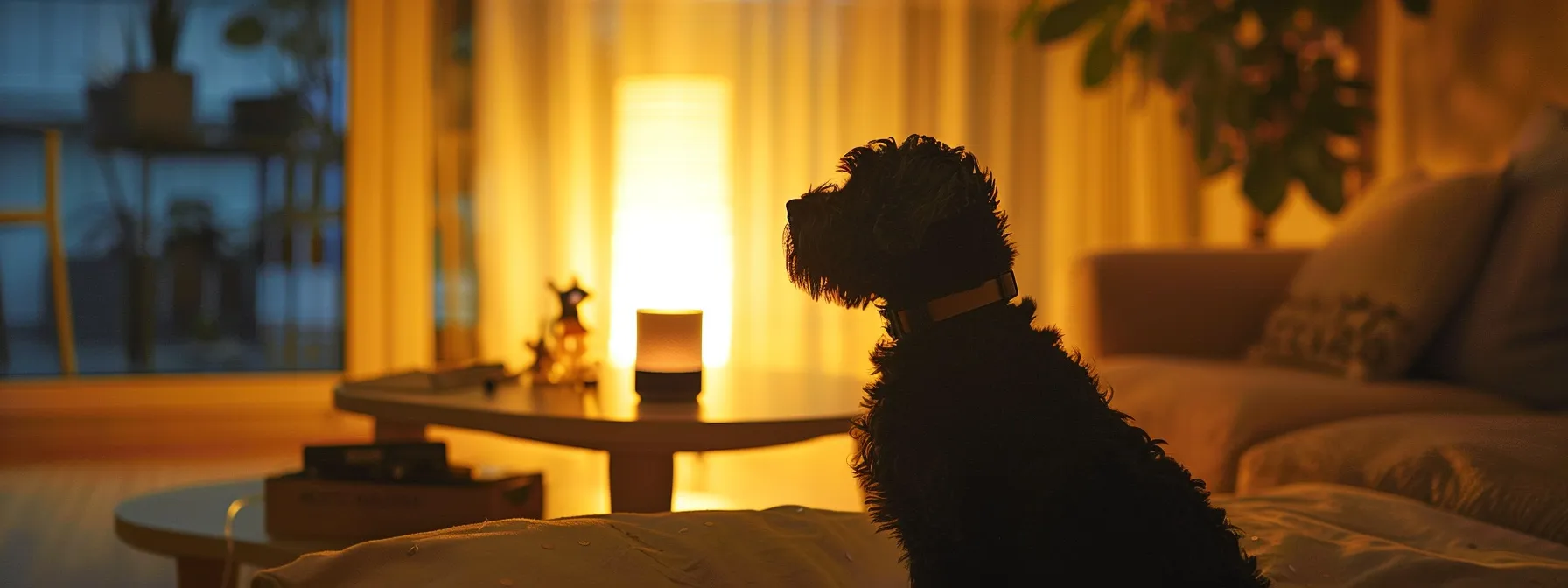
Advancing beyond the fundamental setup of a pet camera, pet owners can explore interoperability with existing smart home ecosystems for an elevated experience. By integrating cameras with smart home devices, owners gain enhanced control and automation, allowing ease of use through streamlined platforms. Voice commands become a possibility when the camera is connected to virtual assistants such as Amazon Alexa or Google Assistant, providing hands-free operation and responsive interaction. Additionally, these technological advancements create avenues for pet owners to review and effortlessly share endearing moments caught by their cameras, fostering connections with friends and family while showcasing the charming antics of their pets.
Integrate Your Pet Camera With Smart Home Devices
Advancing the capabilities of pet monitoring, integrating a pet camera with smart home devices enhances the holistic operation of household technology. Users can synchronize their pet camera systems with other smart devices, enabling centralized control and streamlined interactions throughout their living spaces.
This integration affords pet owners the convenience of adjusting settings, reviewing footage, and even controlling camera angles via a unified smart home hub or application. The result is a seamless and more efficient way to keep an eye on pets through a network of interconnected devices that work in harmony.
Use Voice Commands Through Virtual Assistants
The sophistication of modern smart homes has ushered in an era where voice command functionality through virtual assistants like Amazon Alexa or Google Assistant is commonplace. Pet camera installations can be enhanced by integrating with these assistants, enabling users to issue vocal instructions for operations like activating live views or recording specific moments.
By vocalizing commands, pet owners are liberated from manual navigation through apps and settings, allowing for an immediate and hands-free way to interact with their pet camera. This convenience empowers users to stay connected with their pets through their pet cameras with ease, adding a layer of functionality and accessibility to their pet monitoring system.
Review and Share Cute Moments Captured on Camera
Once a pet camera is strategically positioned in the home to capture the essence of a pet’s daily life, the ability to review and share these moments adds a layer of joy to the pet ownership experience. Owners can easily replay the highlights captured by their cameras, reveling in the spontaneous grace of their pet‘s movements or the charming quirks that define their personality.
Sharing these endearing snippets becomes a breeze with integrated sharing options in the pet camera‘s app, allowing pet owners to spread smiles among friends and family via social media or direct messaging. This feature not only documents the pet‘s life but also allows owners to keep distant loved ones connected with the furry member of the family, bridging gaps with the universal language of pet antics.
Frequently Asked Questions
What should I consider when choosing a pet camera?
Selecting a pet camera involves assessing the device’s features in relation to both your needs and your pet‘s habits. Consideration must also be given to its ease of use, the quality of video it can capture, and the extent of its interactive capabilities.
- Video Quality and Night Vision: High-resolution video and night vision are key for clear images, whether day or night.
- Two-Way Audio: This allows for communication with your pet and can help soothe them in your absence.
- Camera Angle and Range: A wide-angle lens and the ability to pan or tilt ensure you can view your entire desired area.
- Connectivity and App Integration: Stable connectivity and a user-friendly app are essential for remote monitoring and controls.
- Activity Alerts: Notifications for movements or sounds can alert you to check in on your pet.
- Treat Dispenser: Some cameras offer the ability to dispense treats, adding an interactive element that can reward and entertain your pet.
The pet camera market offers a variety of options; prioritizing which features align with your lifestyle will guide you to the best choice for keeping an eye on your furry companion.
Can I mount a pet camera without drilling holes?
Certainly, mounting a pet camera without the need for drilling is possible through the use of adhesive hooks or clamp-based systems designed for easy installation and removal. Owners can opt for freestanding cameras as well, providing the flexibility to position the device in various locations throughout the home without altering the physical structure.
How do I reset my pet camera if it disconnects?
To reset a pet camera that has disconnected, often a simple power cycle can resolve the issue—unplug the device for about 60 seconds, and then reconnect it. If the disconnection persists, consult the user manual for a dedicated reset button or sequence, typically involving holding a button for a few seconds to restore factory settings.
What steps can I take to protect my pet camera from hackers?
To safeguard your pet camera from unauthorized access, it is vital to practice regular password updates and enable two-factor authentication. Additionally, ensuring your home network security is robust and applying firmware updates promptly for the camera can significantly reduce the risk of hacking incidents.
Are there special features to look for in pet cameras for night monitoring?
Certainly, when selecting a pet camera for night-time monitoring, two vital features to consider are infrared night vision capabilities and motion detection technology. These functions ensure that even in the absence of light, pets remain within sight and any unusual activity alerts the owner promptly.
Conclusion
A simple pet camera installation ensures owners can monitor and engage with their pets effectively, even when they’re away. By following straightforward steps for setup, testing, and feature enhancement, owners maximize both the security and comfort of their pets. Maintaining updated firmware and secure app settings preserves the integrity and privacy of the pet camera system. Ultimately, a well-installed pet camera becomes an invaluable tool for pet care, providing peace of mind and fostering a deeper connection between pets and their owners.





